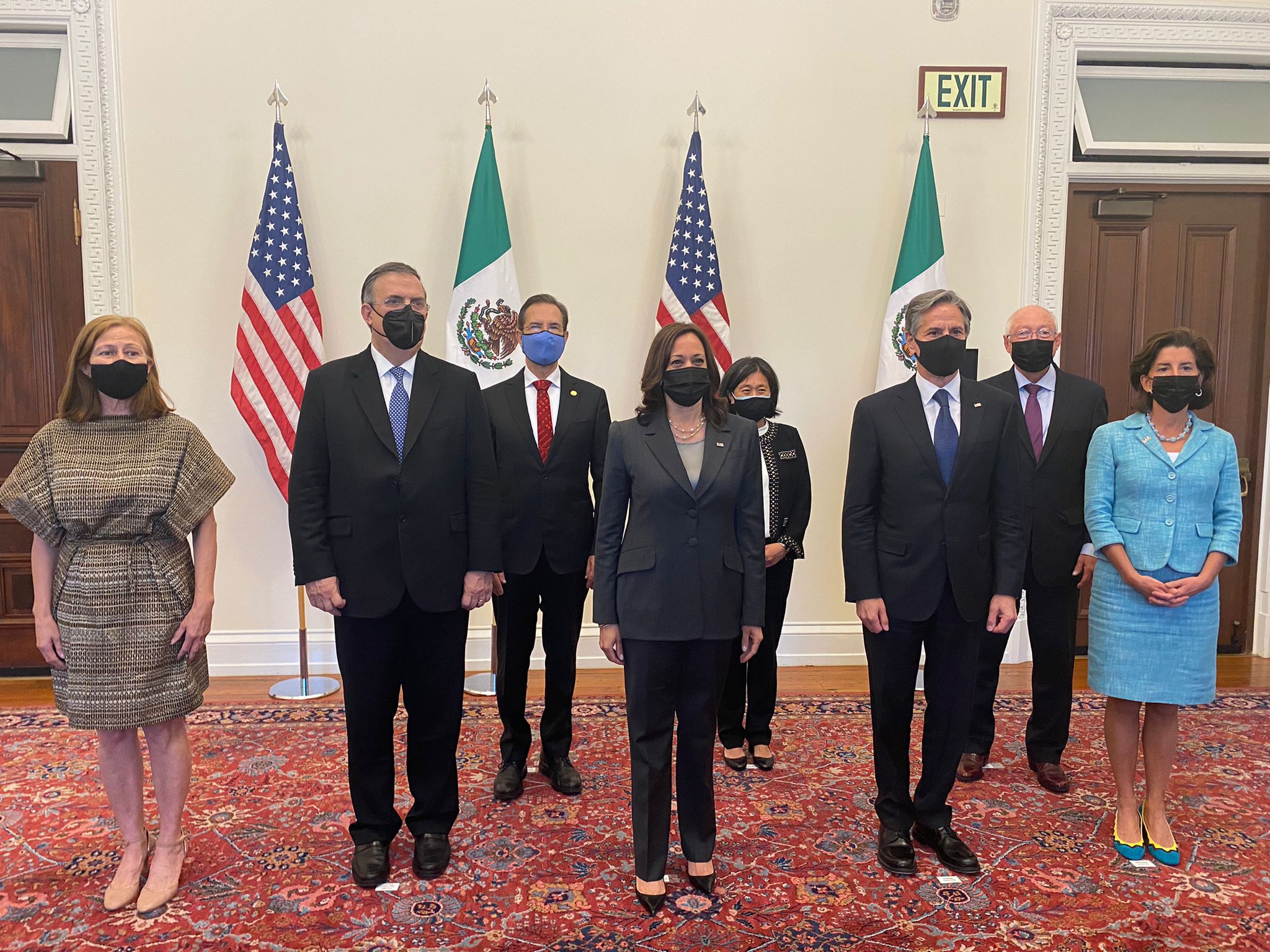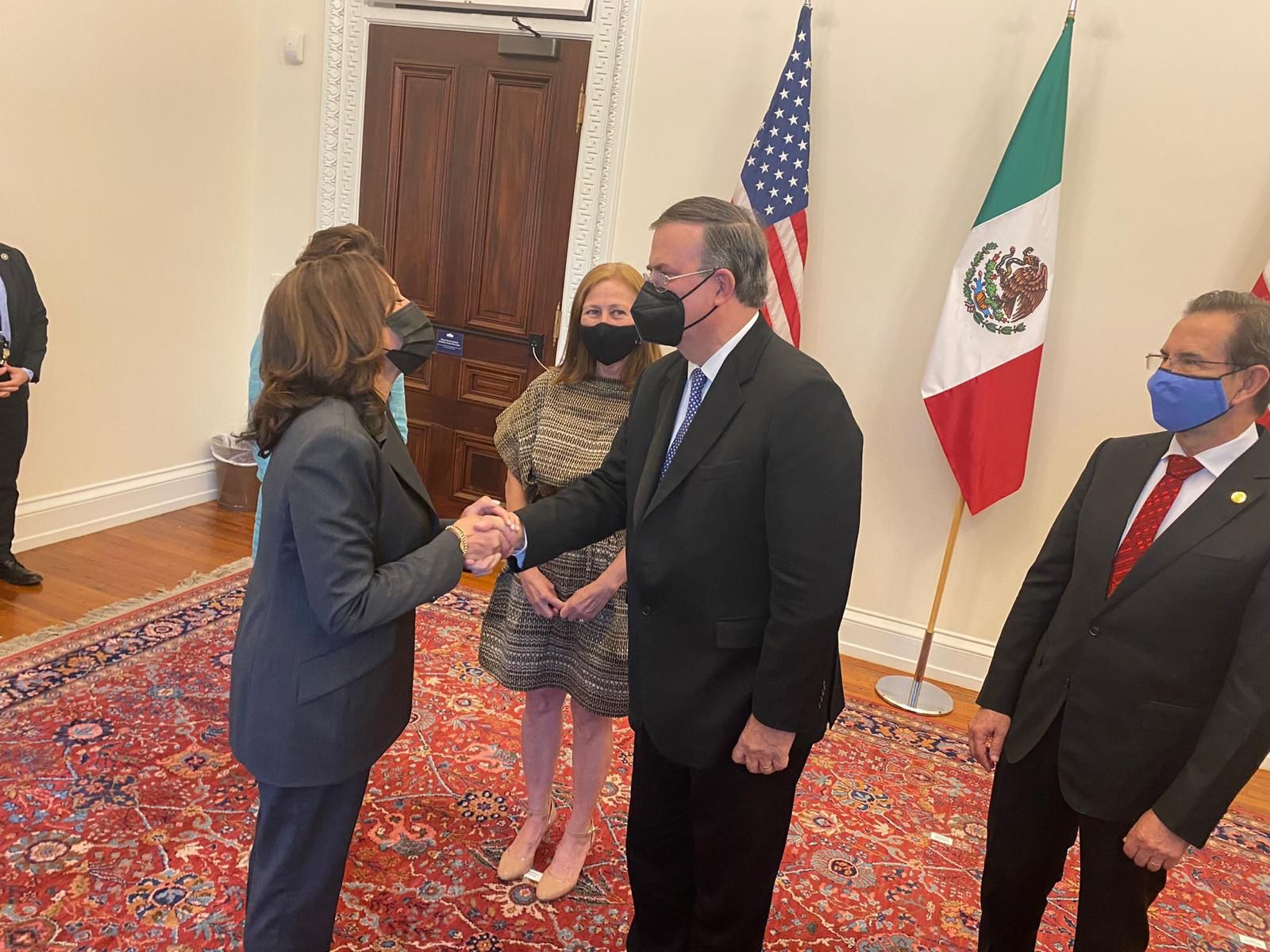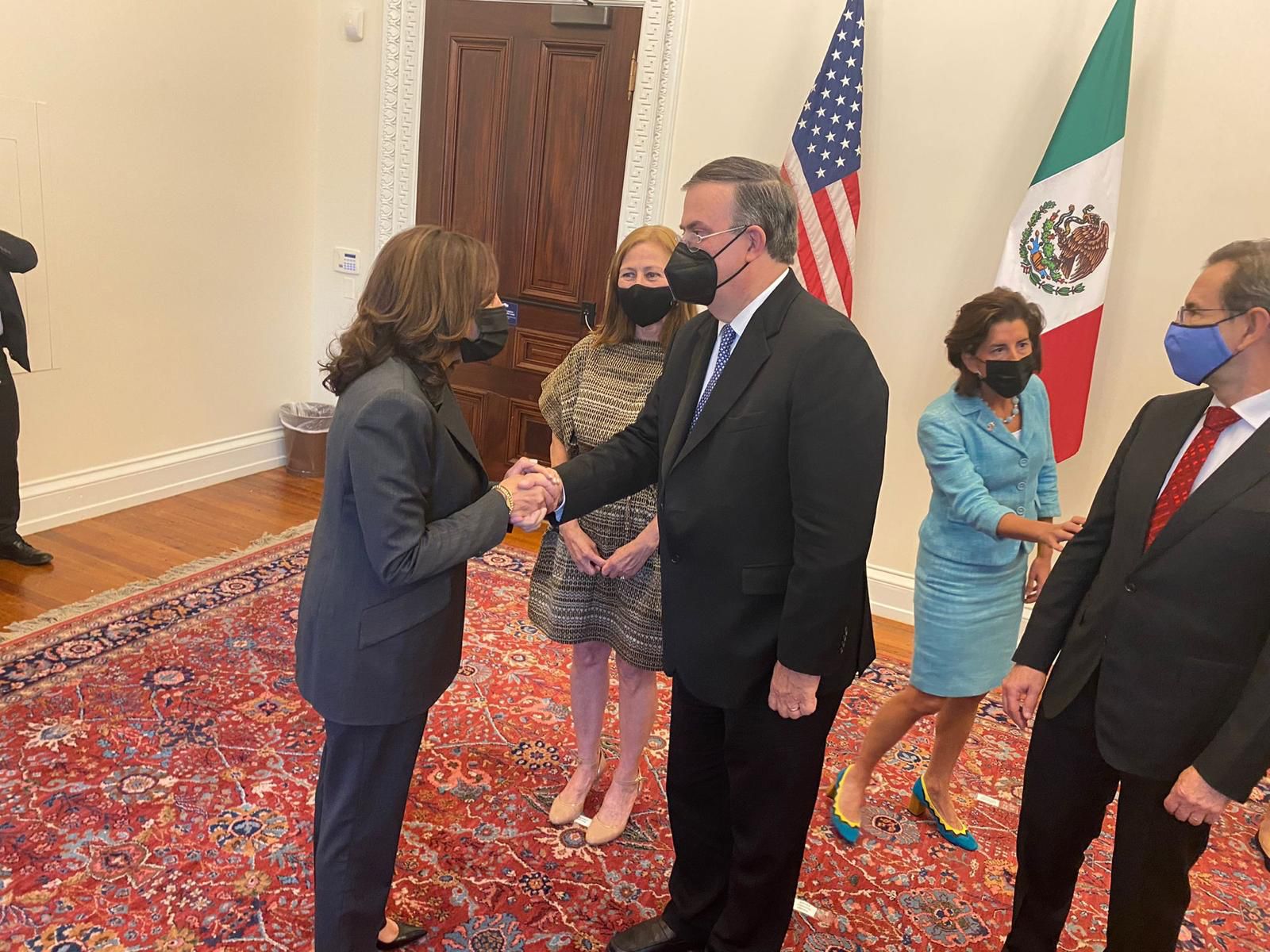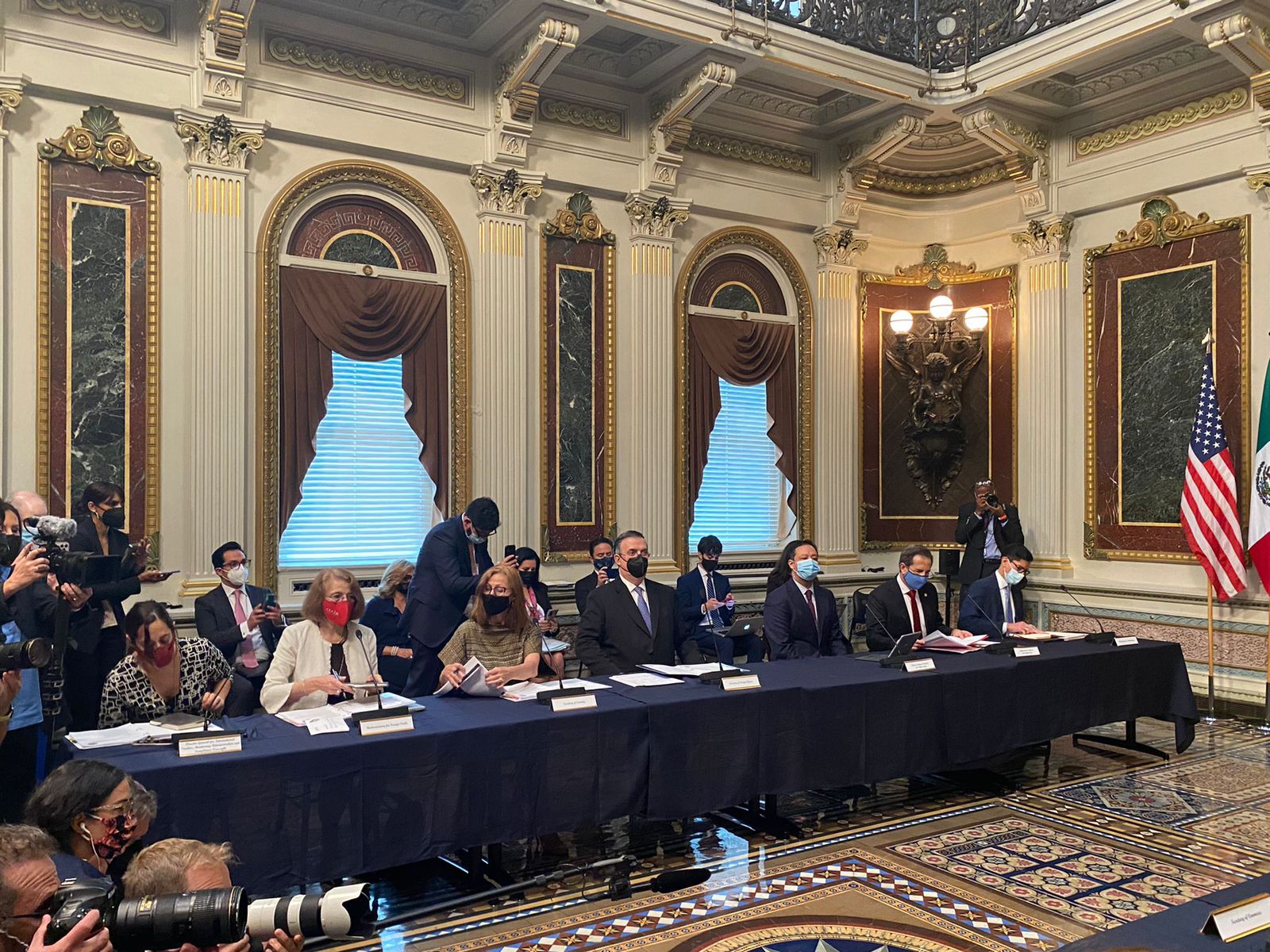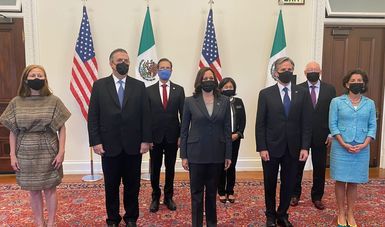- The aim of the HLED is to advance the strategic economic, social and commercial priorities that are central to promoting regional economic growth, creating jobs, investing in our people and reducing inequalities and poverty in all its dimensions.
- The two countries agreed to create a Bilateral Working Group on Supply Chains to find areas of complementarity in new and existing chains that further the interests of each country.
Following up on the meeting between President Andrés Manuel López Obrador and President Joseph Biden last March, the High-Level Economic Dialogue between Mexico and the United States (HLED) was relaunched today at the White House. The HLED seeks to advance the strategic economic, social and commercial priorities that are central to promoting regional economic growth, creating jobs, investing in our people and reducing inequalities and poverty in all its dimensions.
The Vice President of the United States, Kamala Harris, and Secretary of Foreign Affairs Marcelo Ebrard delivered a welcome message to the media highlighting the importance of the closeness between the two administrations, and their shared strategic vision regarding their priorities for the sustainable economic development of the American region.
Secretary Clouthier and Secretary Raimondo then shared their vision of making the HLED into a platform that leads to a post-pandemic economic recovery by promoting specific bilateral priority actions based on areas of agreement that add to the efforts of both governments within the USMCA and the other existing instruments for bilateral collaboration.
During the meeting, the delegations discussed the four pillars agreed on by both sides that frame the strategic vision both countries will bring to their economic relationship over the coming years: i) Building Back Together; ii) Promoting Sustainable Economic and Social Development in Southern Mexico and Central America; iii) Securing the Tools for Future Prosperity and iv) Investing in Our People.
For the first pillar, Building Back Together, Mexico and the United States will create a Bilateral Working Group on Supply Chains to find areas of complementarity in existing and new supply chains to ensure their operation and mitigate possible disruptions, increase competitiveness, attract supply chains from other regions in the world and reduce vulnerabilities in critical sectors, in line with the interests of each country. They also agreed on the importance of modern, efficient and safe border infrastructure and trade facilitation procedures.
For the second pillar, Promoting Sustainable Economic and Social Development in Southern Mexico and Central America, the United States will provide technical cooperation to address the structural causes of emigration in northern Central America. Specifically, it will collaborate with the Mexican government on the Sowing Life and Youths Building the Future programs in the region. In addition, U.S. agencies will undertake activities to develop value chains; for example, by better connecting agricultural producers and consumers or creating bankable projects that attract private investment. Both countries will collaborate to promote trade and spur investment in productive projects that promote regional development.
Recognizing the importance of having a strong and secure digital environment, it was agreed that the third pillar Securing the Tools for Future Prosperity would focus on the coordinated mitigation of cyber threats to supply chains and improving the flow of data between the two countries.
A priority for both governments is a more egalitarian economy, so the fourth pillar, Investing in Our People, will focus on providing vulnerable populations such as women, youths, Indigenous people and the LGBTQ+ community with training in the skills needed to be competitive in the 21st-century economy. In addition, aware that SMEs are the basis of our economic activity, we will collaborate to integrate them into regional value chains.
The HLED will communicate and collaborate closely with the private sector, academia, and civil society to receive their feedback on the progress of existing initiatives and the inclusion of new ones. The HLED is intended to be a forum that continually evolves: the technical teams will work throughout the year to implement the initiatives. The undersecretaries and unit heads will meet twice yearly and the secretaries will meet once a year. The importance of a financial, scientific and humanistic educational exchange and in preparing and training for the jobs of the future was highlighted.
The Mexican delegation was made up of the Secretaries of Foreign Affairs, Marcelo Ebrard, and Economy, Tatiana Clouthier; the Mexican ambassador to the U.S., Esteban Moctezuma, and the Undersecretary of Finance and Public Credit, Gabriel Yorio. The U.S. was represented by Vice President Kamala Harris; Secretary of State Antony Blinken; Commerce Secretary Gina Raimondo; Homeland Security Secretary Alejandro Mayorkas; U.S. Trade Representative Katherine Tai; USAID Administrator Samantha Power; the U.S. Ambassador-designate to Mexico, Ken Salazar; and the Under Secretary for Economic Growth, Energy and the Environment, José Fernández.
With the HLED, Mexico and the United States reaffirm their commitment to regional economic integration and recognize the importance of maintaining the strategic and close collaboration that has historically characterized our countries.
